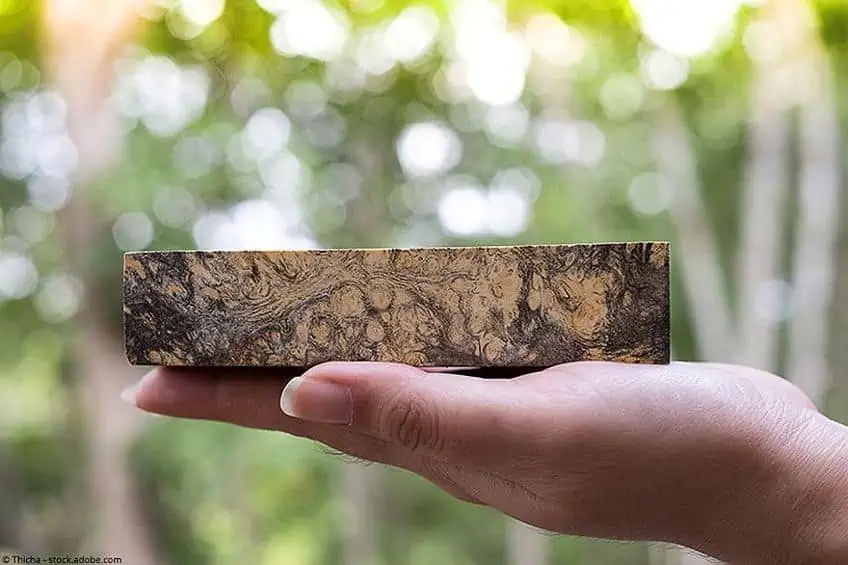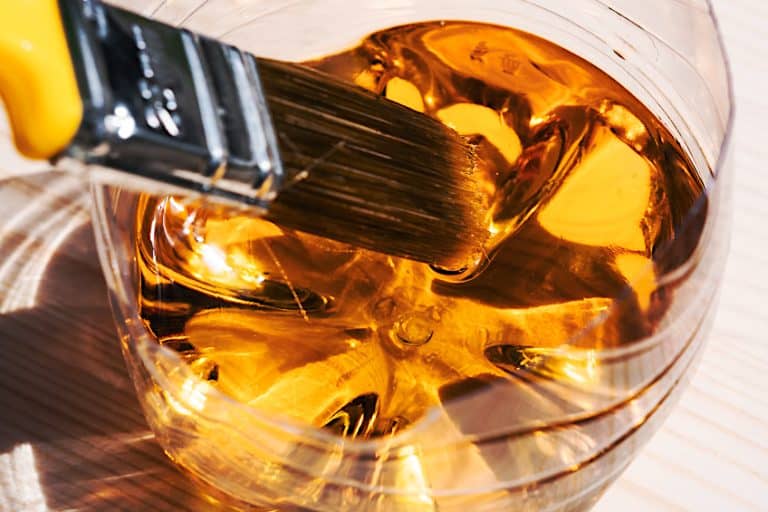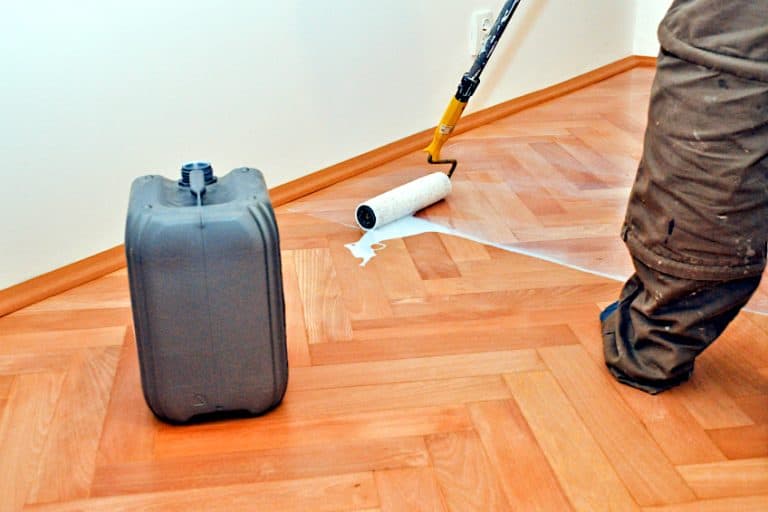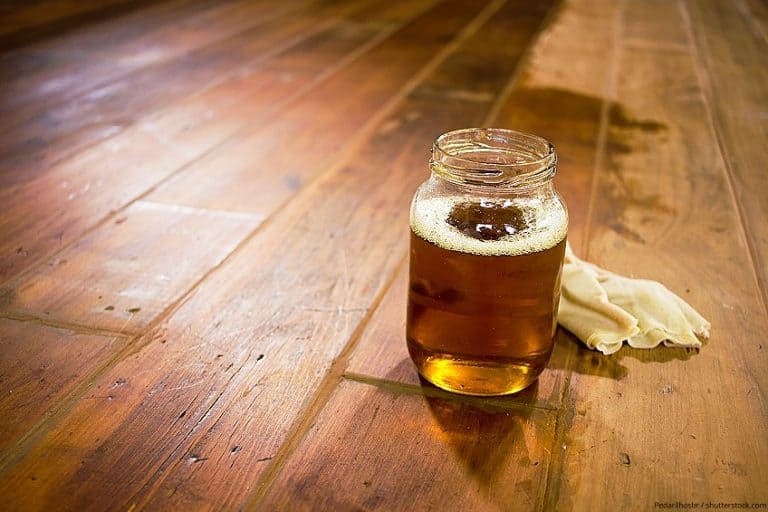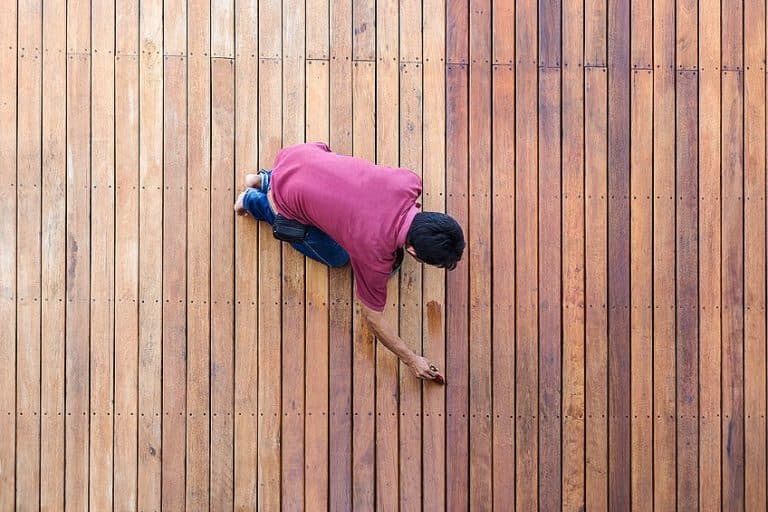Best Wood Hardener – Restoring Wood With a Rotted Wood Stabilizer
Wood is a strong but surprisingly delicate material. Used to build ships and houses alike, wood is also very prone to degradation from moisture and insects. Rot and termite damage can have disastrous effects, particularly when the wood is load-bearing. Fortunately, you can easily use a liquid wood hardener to restore the strength of damaged wood and preserve it for longer. There are many different options available, so you must do the research and make sure that you are buying the best wood hardener for your unique project.
Table of Contents
Why Do You Need a Wood Hardener?
Wood is a widely used material, but it can be difficult to maintain. Rot and insects can quickly destroy the structure of the wood. Damage can be particularly dangerous for load-bearing timber structures, and can make wooden furniture and household trimmings look unsightly. A wood hardener is a quick and easy way to repair rot and insect damage so as to prolong the life of your wood.
Wood hardeners are most suitable for small areas of partially damaged wood and using them can be a more cost-effective option than replacement. These products are very easy to use and require no expertise or skill, which makes them an ideal tool for at-home wood enthusiasts. There are many different rotted wood restorer products available and this can make it difficult to know which is the best option for your project. Continue reading for some wood hardener reviews to help you find the best wood hardener for your unique needs.
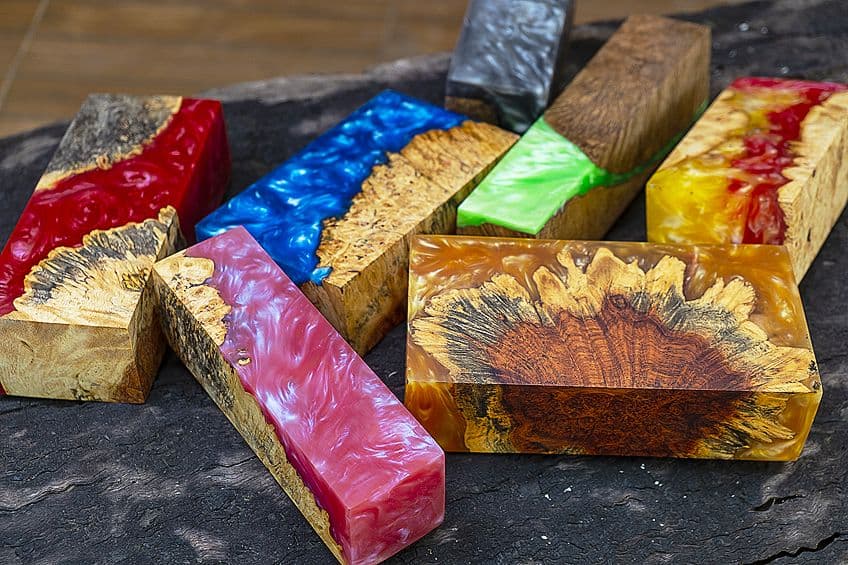
Consistency is Key
The consistency of your chosen rotted wood restorer is a key consideration. The right consistency for your project depends on the wooden surface, the degree of damage, and whether your wood is based inside or outside. The consistency also determines how you will apply the hardener to get the best possible results. It is often easier to spray thinner consistencies onto the wood, where some people even soak the wood if it is badly damaged. Hardeners of a thicker consistency, on the other hand, often produce the best results when they are brushed on.
The wooden surface you would like to restore is likely to influence the consistency you choose. If you are working with horizontal flat surfaces, you can easily use either a thick or thin hardener. If you are wanting to repair a vertical surface, however, then it may be easier to use a thicker consistency so as to reduce running and dripping.
If you are working with a piece of wood that is very badly damaged by rot, then a thinner consistency will be better. A thinner hardener can soak deep into the pores of the wood more easily, thus ensuring that the wood is stabilized throughout. If your wood is only mildly damaged, then a thicker consistency will work just fine.
If you are planning on repairing a damaged fence or another wooden structure that is outside and will be exposed to water, you must use a durable and sealing wood hardener. A relatively thicker hardener can be helpful. Layers of this thicker liquid wood hardener can double as a paint primer, sealing the wood from any further moisture.
Our Top Three Recommended Wood Hardeners
With such a wide range of wood hardening products to choose from, it can be difficult to weigh up the cost with the quality. When you are working with wood outdoors, it is essential to choose a liquid wood hardener that will thoroughly harden and protect your wood from future rot damage.
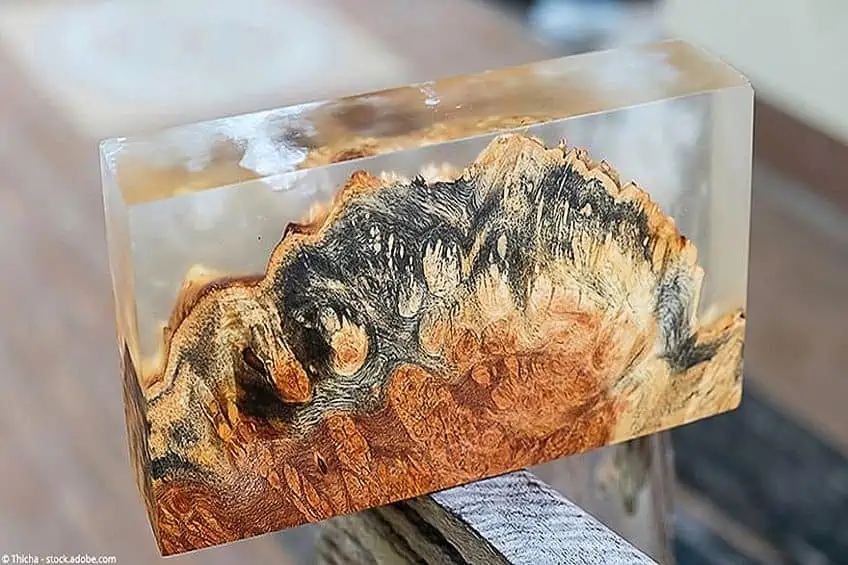
Our Best Value Recommendation: J-B WELD Wood Restore Liquid Hardener
This is an affordable rotten wood stabilizer that comes highly recommended by many woodworkers. The selling feature of this particular wood hardening product is that it actively reduces the moisture within the wood, which can help prepare them for filling, priming, and painting. As with all products, there are some advantages and some drawbacks which you need to weigh up when deciding which is the best rotten wood repairer for your particular job.
- Seals and reinforces decayed or rotted wood
- Quick-drying, versatile, and dependable
- Easy brush-on application
An advantage to using this product is that it draws moisture out of the wood while it dries. Some wood hardeners on the market do not thoroughly penetrate the wood and this can cause the wood to begin to rot internally. This product is one of a kind in its consideration of this problem. This formulation is also quick and easy to use as it requires no mixing or preparation, and it can be used on large and small wooden surfaces. Another advantage is that the JB Weld original version liquid hardener is incredibly long-lasting, with some people saying it can last for up to ten years before re-application. Lastly, this product is fast drying, which makes it ideal for vertical pieces of wood.
Despite all these benefits, there are a few downsides to this rotten wood restorer, with the greatest being that is pretty toxic. You need to be careful when using this and ensure that it is out of reach of children and pets. To protect yourself when working with the wood hardener, you should wear a face mask to avoid breathing in the dust, as this can make you sick. Another possible downside to this particular hardener is that you need to sand it down between coats, which can take more time.
Despite the drawbacks, this is a versatile product that is ideal for window and door frames, fences, garage doors, antique furniture, and many other projects.
Pros
- Quick and easy application
- Fast drying
- Long-lasting
- Actively draws water out of the wood
- Affordable
Cons
- Toxic and requires caution
- Requires sanding between applications
Our Budget-Friendly Recommendation: PC PRODUCTS PC-Petrifier Water-Based Wood Hardener
Once again, this is one of the more affordable wood hardeners available, and it has several advantages that make it a great option for those on a tight budget. This hardener is suitable for treating wood damaged by rot and insects and can be applied with a brush, by spraying, or by injecting the hardener into the pores of the wood. This particular wood hardener can also be used as an outdoor primer for wood you would like to paint, thanks to its thicker consistency.
- Repairs wood damaged by insects or rot
- Can be brushed, sprayed or injected into the wood
- Improves hardness and minimizes damaged wood
This product is unique to the others we recommend because it is water-based rather than solvent-based. The formulation provides some benefits in that it is less toxic and easier to clean, but it also means that it should not be used for heavy-duty repairs. The water base used for this wood hardener makes it environmentally friendly and very safe to use. You can easily clean your equipment with water. Another advantage of using this product is the versatility it offers you. It is slightly thicker than the J-B Weld and Minwax wood hardeners, making it easier to paint with a brush on vertical surfaces.
The thickness of the PC-petrifier hardener is a double-edged sword, however, as it can mean that the hardener does not penetrate the wood as effectively as other brands. This wood hardener therefore is not suitable for structural repairs. Although not a deal-breaker, some users have noted that the nozzle on this bottle can sometimes squirt large blobs of hardener that can be difficult to smooth. The final problem with this rotted wood stabilizer is that it is limited in its compatibility with wood fillers containing borate.
Pros
- Non-toxic and environmentally friendly
- Easy to clean with water
- A marginally thicker consistency that is better for vertical surfaces
- Can double as an outdoor wood primer
- More affordable than other options
Cons
- The nozzle can squirt a little too much hardener
- Not compatible with some wood fillers
- Not suitable for structural or heavy-duty repairs
Our Premium Choice Recommendation: MINWAX High-Performance Wood Hardener
Although the Minwax High-Performance Wood Hardener is a little more expensive than our other suggestions, it is still midrange. The hard resin is dissolved in a thin watery solvent solution that carries the resin deep into the pores of the wood. As it dries, the solvent evaporates quickly, leaving behind the hardened resin and binding together the wood fibers.
- Penetrates deep into the wood
- Special resin binds and reinforces decayed wood fibers
- Seals out moisture
A significant advantage to using this well-known brand is that the Minwax wood hardener acts as a sealant against future water damage and rot. The thin consistency makes sure that the hardener soaks into the very center of the wood. Another benefit to the thinner consistency is that it dries very quickly.
Unfortunately, this thin consistency also has some downsides. Firstly, it may not be the best wood hardener for vertical wooden surfaces, as it can run. While the fast-drying time can be a benefit, it also means that you have less time to correct any mistakes you might make. The biggest problem with this rotted wood stabilizer is that it is highly toxic and dangerous. You need to ensure that you do not get any of it on your hands or in your eyes. Rubber gloves are the best bet, as the harsh chemicals will melt latex gloves.
Minwax is a favorite of many woodworkers because it offers superior penetration, sealing your wooden surface against moisture and protecting it from further damage. This liquid wood hardener is ideal for outdoor projects such as door and window frames, fences, garage doors, and decking.
Pros
- Clear color
- Trusted and established brand
- Quickly absorbed into the wood
- Dries fast
- Versatile
- Thin consistency enables deep penetration
Cons
- Thin consistency can make vertical surfaces difficult to treat
- Quite toxic and dissolves latex gloves
- Fast drying time means little working time
Important Things to Consider When Choosing Your Wood Hardener
While many wood hardeners are not overly pricy, you must know what to look for so that you don’t waste your money. Things to look out for include the drying time, durability, and the color of the hardener, as each of these can impact your outcome.
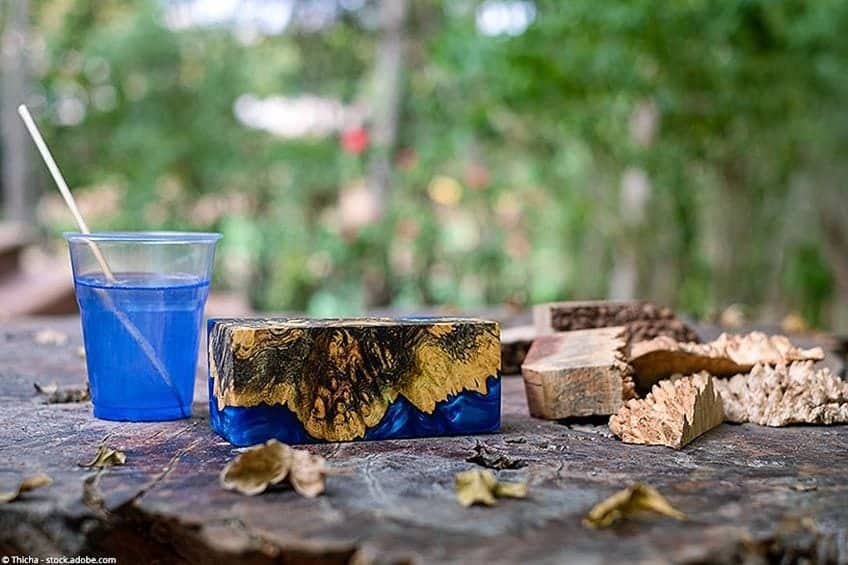
The Drying Time of the Liquid Wood Hardener
Typically, a moderate- to fast-drying formulation is ideal for most projects. Not only does a faster drying time mean that you can get work done quicker, but it is particularly useful if you are working outdoors. You should be wary of buying a liquid wood hardener with a drying time that is too quick however, as it can be difficult to correct any mistakes if it dries too fast.
The Durability of the Hardener
It is important to buy a long-lasting and durable hardener, especially if you are working with wood that will be exposed to the elements. If you need to reapply your hardener within just a couple of months, this is a waste of your time. A hardener like the J-B Weld product is particularly long-lasting (some say up to ten years) and would be ideal for outdoor products.
The Color of the Hardener
As with paint, rotted wood restorers are available in a variety of colors. Some come in various shades of wood stain and others are clear and do not affect the color of the wood. You should decide whether you want to add color and then determine how to match it to the wood that surrounds it. Color is also a consideration when choosing a wood filler to use alongside your hardener, as these should ideally match.
Applying Your Wood Hardener
Once you have your piece of rotten wood and the perfect rotted wood stabilizer for your project, you will be ready to go! To get the best results using a hardener, you need to clean and prepare the wood carefully before applying the formula. Once this is complete, you can use a filler to repair any holes and then prime and paint if you wish.
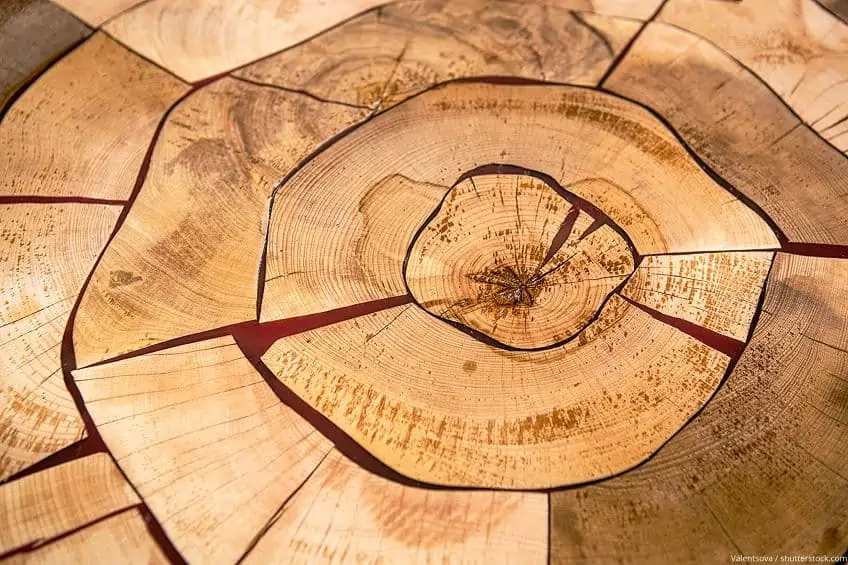
Preparing Your Wood for Hardening
The most important part of preparing your wood is to make sure that it is completely dried out. Any moisture in the very center of the wood will be sealed in by the hardener and will continue to rot and destroy the structure. If you are working with a large wooden surface, this may take anywhere from a few days to a few months. The time of year may also slow the process of drying. Some woodworkers suggest using a heat gun to gently dry the wood, but if you do this, you need to be very careful as rotten and dry wood can burst into flames at the drop of a hat.
Once your wood is thoroughly dried, you need to remove any loose bits of rotten wood. Typically, any bit of wood that can be broken off easily with your fingers needs to go. Use a brush to remove any dust and other dirt so that it is not caught in your hardener. Once you have completed this step, you are ready to apply!
Time to Apply
You will need to work quickly, particularly if you have a fast-drying hardener, so it is best to have all of your equipment ready and on hand. If you need face protection, now is the time to put it on.
You will likely need to apply several coats to your wood, especially if it is badly damaged. If you are working with a large piece of wood like a timber beam or decking, the solvents may take several days to evaporate between each layer, so patience is required. It is also essential that you keep your wood completely dry while the hardener is drying.
Depending on the consistency of your rotted wood stabilizer and the positioning of your piece of wood, you can either spray the hardener directly onto the wood surface or use a brush to paint it on as you would with paint or primer. Some woodworkers have even suggested injecting the hardener directly into the wood.
Aftercare to Ensure Longevity
Once you have successfully applied all the necessary coats of your hardener, you can begin to add the finishing touches. If there are any holes in your wooden surface, you can use a wood filler to fill these in. Although many hardeners act as sealants against moisture if your wood is outside, we suggest that you use a primer and paint or varnish to provide additional strength and waterproofing. Some wood hardeners, like the PC-Petrifier, can double as a primer, and in these cases, you can simply apply your paint directly on top.
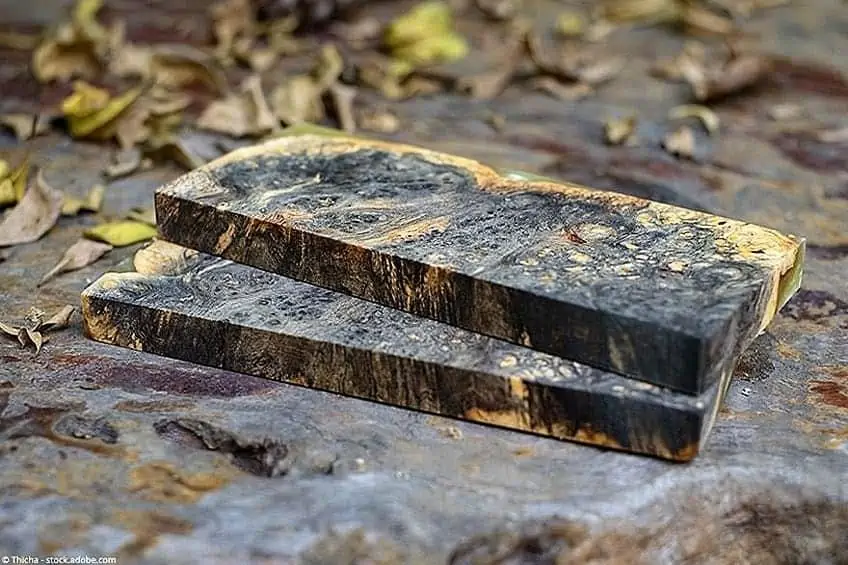
View our How To Use Wood Hardener web story here.
Frequently Asked Questions
Can Wood Hardener be Applied to Wet Wood?
The short answer is no, wood hardener cannot be applied to wet wood. You need to make sure that your wood is dry throughout before applying any wood hardener. If you apply a wood hardener to wood that is still wet inside, it will simply continue to rot from the inside out.
What are Wood Hardeners Made of?
Typically, single-component wood hardeners are made from an acrylic resin dissolved in some form of solvent. The solvent helps to move the resin deep into the wood. As it evaporates, the solvent leaves behind the resin which binds together the fibers of the damaged wood. The solvent can be dangerous if it gets into contact with your eyes or skin, so be sure to use protection like a face mask and rubber gloves. Alternatively, there are some non-toxic water-based hardeners available like the PC-Petrifier, but these can be less durable.
Does Wood Hardener Stop Rot?
Yes, you can use wood hardeners to prevent rot from continuing. Once dried, the resin in wood hardeners binds to the fibers of the rotten wood, adding strength and stability. You must make sure that your wood is completely dry before applying the hardener, however, as it can continue to rot if it is still wet. Many liquid wood hardeners act as sealants to protect the wood from future moisture, but you should still use other products like primers and varnishes if your wood is likely to come into contact with any moisture.
What is the Best Way to Apply Wood Hardener?
You can apply your wood hardener either by spraying or painting with a brush. The method will depend partly on the consistency. A thin wood hardener is applied easily with a sprayer, and if the surface is vertical, you can poke or drill small holes into the surface to aid absorption. You can use a paintbrush to paint on hardeners that have a thicker consistency. Using a brush can also help prevent running or dripping if your surface is vertical. If your wood is extremely soft and rotten, you can even soak it in the wood hardener to make sure that it is thoroughly absorbed.

I have been into woodworking since 2005 and woodturning since 2011. Because of my love for wood and woodworking, I started woodhappen.com to teach other enthusiasts about how to finish and seal wood, the best woodworking tools, the different types of wood, and everything else related to woodworking! Read more about me here.

